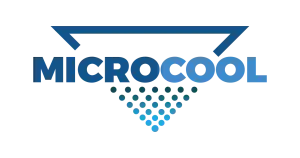High-pressure fog systems are becoming increasingly popular in controlled environment agriculture (CEA), as they offer a precise and efficient way to control the temperature and humidity levels in the environment. By creating a fine mist of water droplets that evaporate quickly, fog systems can lower the ambient temperature through evaporative / adiabatic cooling and increase the relative humidity to prevent plant stress and improve crop quality and yield.
Exceptional Water Quality Yields Remarkable Outcomes
Water quality affects the mineral content in the growing medium. Excessive levels of certain minerals in the water, such as salts, can lead to soil salinity issues, negatively impacting plant growth. Monitoring and managing mineral content help prevent such problems.
The impact of water quality on mineral content extends beyond concerns about soil salinity to include potential mineral buildup within fog systems. Over time, this buildup can hinder the effectiveness of the greenhouse fogging system and compromise its performance.
In this blog post, we will discuss some of the key aspects of water quality for high-pressure fog systems in controlled environment agriculture and provide some tips on how to monitor and improve it.
Why is Water Testing Important for Fog Systems?
Water testing is important for fog systems for several reasons:
Droplet Size
Water quality affects the size and uniformity of the water droplets produced by the greenhouse fog system. The ideal droplet size for fog systems is between 6 and 10 microns. These droplets have a high surface area to volume ratio that ensures rapid evaporation, minimal wetting of the plants and the greenhouse surfaces.
If the water contains impurities, such as salts, minerals, organic matter, or microorganisms, the droplet size can increase. The increase in size lowers the surface area to volume ratio and adds weight to the droplet. A heavier droplet falls faster to the ground reducing the efficiency and effectiveness of the fog system.
The MicroCool fog system is ideal for vertical farming environments due to its rapid evaporation and minimal wetting features. Its versatile installation efficiently maintains an optimal microclimate, contributing significantly to the success and productivity of vertical farming setups.
Lifespan & System Maintenance
Water quality affects the maintenance and lifespan of the fog system components. It will surely affect components such as the nozzles, the pump, and the distribution network. Impurities in the water can cause clogging, corrosion, scaling, or biofilm formation.
Impurities reduce the flow rate, pressure, and spray pattern of the fog system. Furthermore, there will be an increase in the risk of leaks, malfunctions, and breakdowns. In the end, using poor water quality can increase the operational and maintenance costs of the fog system, and shorten its lifespan.
- Also Read: How to Properly Maintain Your Fog System?
Health & Safety
Water quality affects the health and safety of the plants and the workers. Impurities in the water can (without treatment) introduce contaminants, such as pathogens, toxins, or chemicals. In the greenhouse environment, these impurities can harm the plants and the workers.
For example, pathogens in the water can cause diseases in plants. Diseases such as powdery mildew, botrytis, or damping-off may become present. Toxins or chemicals in the water can cause phytotoxicity, or damage the plant tissues, affecting the crop quality and yield.
Additionally, poor water quality greatly affects the health and safety of the plants and the workers in the greenhouse or vertical farm.
How to Measure Water Quality for Fog Systems?
Water quality for fog systems can be measured by various parameters, such as:
pH Levels
The pH is a measure of the acidity or alkalinity of the water on a scale from 0 to 14. A pH of 7 is neutral, lower than 7 is acidic, and higher than 7 is alkaline. The water’s pH affects the solubility and availability of nutrients and minerals for greenhouse crops.
The corrosion and scaling potential of the water for the fog system components is also determined through testing the water’s pH. The ideal pH range for fog systems is between 6 and 8. This ensures optimal plant growth and minimal corrosion and scaling.
Electrical Conductivity (EC)
Electrical Conductivity is a measure of the total dissolved solids (TDS) in the water, such as salts, minerals, or metals, expressed in microsiemens per centimeter (µS/cm). The water’s EC affects osmotic pressure and nutrient uptake of the plants.
The water’s EC also affects the clogging and scaling potential of the water for the fog system components. The ideal EC range for fog systems is between 0 and 500 µS/cm, as this ensures optimal plant health and minimal clogging and scaling.
- Hardness: A measure of the concentration of calcium and magnesium ions in the water, expressed in milligrams per liter (mg/L) or grains per gallon (gpg).
Hardness is a subset of TDS, and it affects the scaling and clogging potential of the water for the fog system components. The ideal hardness range for fog systems is between 0 and 100 mg/L, or 0 and 6 gpg. This ensures minimal scaling and clogging. Water hardness is measured in many ways worldwide, conversions are available online.
- Turbidity: A measure of the clarity or cloudiness of the water. Suspended solids, such as dirt, clay, organic matter, or microorganisms all contribute to the clarity of the water. The water’s clarity is expressed in nephelometric turbidity units (NTU).
Turbidity affects the clogging and biofilm potential of the water for the fog system components. It also determines the aesthetic and sanitary quality of the water. The ideal turbidity range for fog systems is between 0 and 5 NTU, as this ensures minimal clogging and biofilm, as well as high clarity and cleanliness.
- Microbial count: A measurement of the number and type of microorganisms in the water, such as bacteria, fungi, algae, or viruses, expressed in colony forming units per milliliter (CFU/mL).
Microbial count affects the biofilm and disease potential of the water for the fog system components and the plants, as well as the health and safety of the workers. The ideal microbial count for fog systems is between 0 and 100 CFU/mL, as this ensures minimal biofilm and disease, and high hygiene and safety.
How to Improve Water Quality for Fog Systems?
Water quality for fog systems can be improved by various methods, such as:
Water Source Selection
The water source for the fog system can significantly impact the water quality. Depending on the location, climate, and treatment processes, various sources such as municipal water, well water, rainwater, or reclaimed water, can have different levels and types of impurities.
Well Water
Each well, being a unique underground reservoir, possesses distinct chemical compositions that can significantly influence water quality. The geological characteristics of the surrounding soil and rock formations contribute to variations observed in well water’s chemistry. Consequently, different treatment approaches may be required to purify water from various wells effectively.
Factors such as mineral content, pH levels, and the presence of contaminants can differ markedly between wells. As a result, a comprehensive understanding of the specific chemistry of each well is crucial for tailoring water treatment processes. Chosen treatment processes must address the individual characteristics and challenges associated with each water source.
Therefore, it is important to choose a reliable and consistent source of water for the fog system. It is recommended to test the water quality regularly to detect any changes or fluctuations. Regular testing and analysis of the well water can provide valuable insights into its composition. This allows for purification methods to ensure optimal performance and longevity of the greenhouse fog system.
Reverse Osmosis (RO)
Reverse Osmosis is a water filtration process that can provide high-quality water for fog systems in horticulture. RO can improve the efficiency and effectiveness of the fog system and extend the lifespan, reducing the maintenance of the fog system components.
RO can also improve the health and safety of the plants and the workers. Choosing and using an RO system for fog systems requires many considerations. One must consider the source selection, the pretreatment, the system design, and the post-treatment of the water. Lastly, testing and monitoring the water quality and the RO performance is important.
Reverse Osmosis, when correctly configured, will remove particles down to 0.0001 Microns which encompasses metallic ions, aqueous salts (0.001 microns), colloids, viruses (0.01 micron), bacteria and fungi including sand, and pollens.
Softening
Softening is a process of removing hardness, or calcium and magnesium ions, from the water. The use of chemical or physical methods, such as ion exchange, chelation, or precipitation aid in removing hardness.
Softening can reduce the scaling and clogging potential of the water, in addition to extending the lifespan of the fog system components. There are several types of softeners, such as salt-based softeners, salt-free softeners, or magnetic softeners, that remove different amounts and types of hardness.
It is worth noting that some softeners will ion exchange (removing calcium & magnesium) and replace them with another compound. This can result in more “dusting” from the fog system.
Disinfection
Disinfection is a process of killing or inactivating microorganisms, such as bacteria, fungi, algae, or viruses in the water. The process uses chemical or physical methods, such as chlorine, ozone, ultraviolet light, or heat to kill microorganisms.
Ultraviolet (UV) Light
A MicroCool fog system relies on the simplicity and effectiveness of Ultraviolet (UV) light in its water treatment attributes, achieving a 99.9% elimination of known contaminants. Even though Reverse Osmosis (RO) effectively removes bacteria and viruses, MicroCool adds UV as a precautionary measure in case of any potential RO system failure.
This dual approach ensures a robust defense against a wide range of contaminants, highlighting MicroCool’s commitment to delivering reliable and high-quality water treatment solutions. The inclusion of UV technology acts as an extra layer of protection, reinforcing confidence in the purity and safety of the water provided by MicroCool systems.
Activated Carbon Pre-filtration
Cities commonly use chlorine or chloramine as disinfectants in the water treatment process to eliminate harmful microorganisms and pathogens. However, the presence of residual disinfectants in the treated water can impact water quality.
Activated Carbon pre-filtration plays a crucial role in addressing this issue by efficiently removing residual chlorine or chloramine. The activated carbon in the pre-filtration system adsorbs and captures these disinfectants, enhancing the water’s aesthetic quality. This method ensures that the water delivered to a greenhouse fog system is free from excessive residual disinfectant concentrations.
Filtration
This is a process of removing suspended solids, such as dirt, clay, organic matter, or microorganisms. These solids are removed from the water using physical barriers such as screens, meshes, or membranes.
Filtration can reduce the turbidity and the microbial count of the water. This prevents clogging and biofilm formation in the fog system components. There are several types of filters, such as sand filters, cartridge filters, or bag filters.
Filters can remove various sizes and types of particles depending on the water quality and the fog system requirements. However, they will not remove the metallic ions and aqueous salts that can cause calcium or magnesium deposits in the system and the greenhouse.
- Also read: Greenhouse Cooling Fog System Guide: Setting the Foundation for High-Performance Operation
Enhancing Crop Health and Yield
Water quality is a crucial factor for the performance and durability of fog systems in horticulture, as well as the health and safety of the plants and the workers.
By measuring and improving the water quality parameters, such as pH, EC, hardness, turbidity, and microbial count, growers can optimize the efficiency and effectiveness of their fog systems and achieve higher crop quality and yield.
Contact MicroCool today by calling 760-322-1111 or emailing fog@microcool.com to discuss the right fog system and treatment process for your water source.





